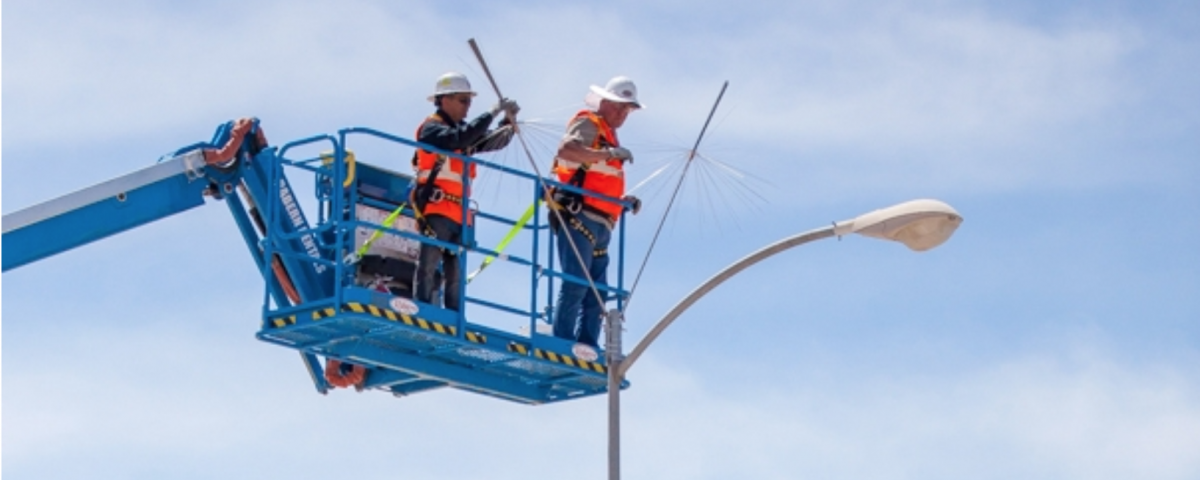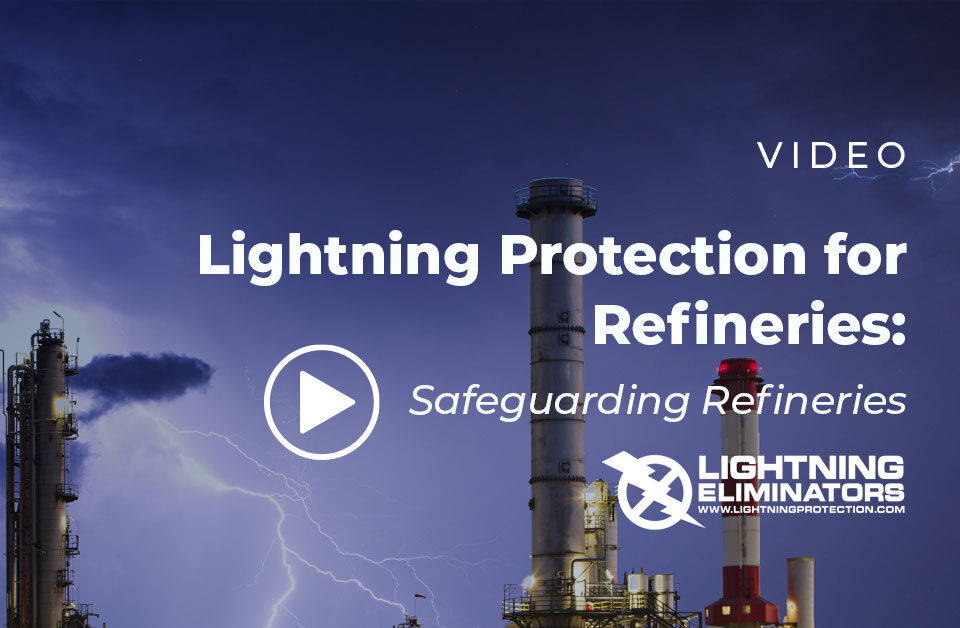CARLSBAD, N.M.
– The EM Waste Isolation Pilot Plant’s (WIPP) lightning protection system, which has weathered 30 years in the New Mexico desert, is getting needed repairs and upgrades.
The system, designed on a 101-year-old patent from inventor Nikola Tesla, has prevented a direct lightning strike inside WIPP’s fence line for the past 30 years in an area that’s noted for its summer storms.
WIPP subcontractor Duke Electric of Amarillo, Texas, spent about a month stringing new wires, fixing breaks, and positioning upgraded components throughout the lightning protection system.
Eventually, the system will expand to include the new Safety Significant Confinement Ventilation System and utility shaft area. Together, these will replace an aging ventilation system and provide sufficient airflow for simultaneous mining, waste emplacement, and maintenance. The utility shaft will also allow for a supplemental hoisting capability.
Photo: A crew installs small spline balls atop light poles at the Waste Isolation Pilot Plant.
Lightning Eliminators of Boulder, Colo., provides lightning protection at WIPP and elsewhere across the nation, including DOE’s Savannah River Site and nuclear plants.
“The math and the principles haven’t changed,” said Matt Napier, the company’s president, referring to Tesla’s original idea, which included sketches of something looking vaguely like a palm tree.
Today, those “palm trees,” looking down on the WIPP site from its highest points, are dissipation arrays, the most noticeable part of a system that takes many forms.
Two arrays overlook the current ventilation system. Another is near the water supply tanks. Others are atop the air intake shaft and salt hoist. A larger array is on top of the waste hoist building. Wires encircle the site above the fence line, and new small arrays that look like dandelions, called spline balls, top the site’s light poles, filling in coverage gaps.
Photo: Waste Isolation Pilot Plant workers added small arrays atop light poles to expand coverage between the lightning protection system’s larger units.
Lightning forms when a path is created between positively charged things on the ground, such as trees, buildings, and people, and the negatively charged bottom of a thunder cell.
The system uses the theory of point discharge, using up to 10,000 individual metal points on the dissipation arrays to create a cloud of positive ions in reaction to the negative charge of the thunder cell. The flood of ions blocks positively charged “streamers” from moving upward to create a lightning path.
If a strike got through, the arrays funnel the charge into a copper grid underlying WIPP.
“The WIPP lightning protection system has done a remarkable job of protecting the millions of dollars of site infrastructure as well as our most priceless asset, our employees,” said Gene Balsmeier, chief operating officer and deputy project manager for Nuclear Waste Partnership, WIPP’s management and operations contractor.





1 Comment
Thanks for sharing the information this blog helps me lot.